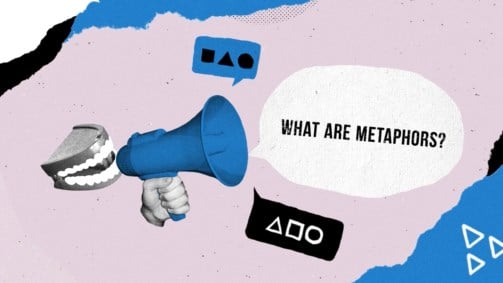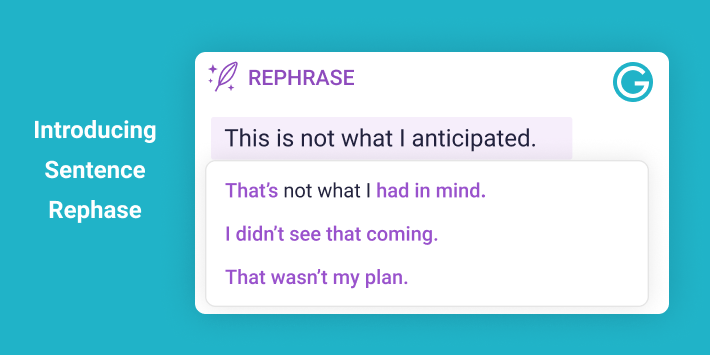[embed]https://youtu.be/e5s7j8dOaT8[/embed]

Definition of Metaphor
A metaphor is a word or phrase that describes something in a way that isn’t literally true yet works to help our understanding by way of providing comparison. A metaphor refers to someone or something to show that they are alike. Sometimes we refer to metaphors as figures of speech, meaning they should not be understood in a literal sense but are instead used to explain something in a more vivid way. In fact, at times a metaphor could be an object (in the non-linguistic sense) used as a symbol to explain something else. Metaphors are often used in poetry and literature, but they also play an important role in everyday language, adding both color and context to speech. Of course, the best way to understand the metaphor definition is to see some examples:- This bedroom is a pigsty. The bedroom is not literally a pigsty (a pen or enclosure for pigs), but the metaphor is used to stress how untidy or dirty it is.
- The wheels of justice turn slowly. They aren’t literal wheels, but the metaphor serves to illustrate that justice, normally in a legal sense, can take time.
- Dad is my rock. Nobody is literally a rock, but the metaphor is used to convey that a person is solid, dependable.
- Tim is an animal in the courtroom. Tim is not really an animal, but the metaphor is used to convey that he is wild and aggressive when he is in court.
- Molly is up to her neck in paperwork. Molly isn’t really covered in papers, but the metaphor is showing that she has a lot of work to complete.
- The movie Wall Street is a metaphor for the extreme greed of the 1980s. This sentence is not itself a metaphor, but serves to highlight that an object, like a film or painting, can be interpreted as one.
Types of Metaphors
Language experts will often argue as to how many different types of metaphors exist, with up to 15 sometimes cited. However, we can whittle it down to three main areas – direct metaphors, implied metaphors and sustained (extended) metaphors. The first two, direct and implied, are much more common in everyday language than sustained metaphors.Direct Metaphors
Direct metaphors are used in comparisons, basically saying that one thing is another thing. They are perhaps the easiest to spot and understand in a sentence.- Those children are angels. The children are well-behaved.
- Congress is a circus show. Congress is unruly, dramatic.
- My mother is a lioness. My mother is strong and protective.
Implied Metaphors
Implied, or indirect, metaphors do not explicitly say that one thing is another, but they hint at a connection in a subtler way than direct metaphors.- The witness crumbled under the pressure of giving testimony. A person wouldn’t literally crumble, but the metaphor is used to create an image of falling apart – like a cookie, something brittle – to stress the difficulty of the situation and how the witness fell apart.
- The sergeant barked orders at the troops. A person wouldn’t literally bark like a dog, but the metaphor indirectly compares the sergeant to a dog to create an image of sharp, abrupt commands.
- Julie sailed confidently across the dancefloor. The implied metaphor uses the verb sail to give the subject smooth, boat-like qualities, hinting at grace, speed and poise.
Extended Metaphors
Extended metaphors are more common in poetry and literature than everyday speech. As you might expect, they are often comprised of more than one sentence, perhaps encompassing an entire paragraph or passage. One of the most famous extended metaphors is Shakespeare’s ‘world’s a stage’ metaphor at the end of The Tempest. In the metaphor, Shakespeare makes several metaphorical references to life being a play, and thus the passage itself becomes an extended or sustained metaphor. “All the world’s a stage, and all the men and women merely players; They have their exits and their entrances; And one man in his time plays many parts.”Dead Metaphors
Dead metaphors are phrases that have become so commonplace that the imagery they used to create no longer has any impact. In fact, some academics claim dead metaphors are not metaphors at all, such is the loss of their imagery and visual impact.- It’s raining cats and dogs. A common phrase meaning it’s raining heavily. It’s been so frequently used that the imagery of falling animals is no longer important.
- He has kicked the bucket. A once gruesome metaphor to convey that someone had died, with the bucket falling over referencing hanging. Now the phrase has become so commonplace, although it’s still a crude reference to death, that we no longer think of the imagery of its origins.
Mixed Metaphors
Special mention should be made of mixed metaphors, which aren’t really metaphors, but linguistic errors made by confusing and combining more than one metaphor. Mixed metaphors are often comprised of dead metaphors, and can be, somewhat ironically, celebrated in modern pop culture.- “Labour are fighting like rats in a barrel”. Spoken by a UK member of Parliment in 2014, it seems to confuse the metaphors of rats fleeing a sinking ship and shooting fish in a barrel and comes up with a sentence with an unclear meaning.
Simile vs. Metaphor
There is often some confusion over the difference between similes and metaphors. In short, a simile is a type of metaphor that uses the words like or as to compare things. Metaphors, as we have seen above, can directly state a comparison or imply a comparison, but similes use like or as to compare two or more things. Examples of similes:- He is as strong as an ox.
- Jamie ran, swift like the wind, across the field.
- Your words cut like a knife.
- The boys laughed like hyenas.

Examples of Metaphors
The beauty of metaphors is that they are limitless in number. Indeed, it’s important to understand that metaphors are not just established sayings or idioms. New metaphors are created all the time and those created by you or I are just as valid as those created in established literature and linguistics, and maybe even Shakespeare! However, here are some more examples of metaphors:Direct metaphors
- Those boys are little imps.
- My brain is a computer.
- She is a delicate flower.
- This job is a prison.
- He is a monster.
Implied metaphors
- The cogs whirred in her mind until she found the answer.
- The defense crouched behind the quarterback, snarling and bearing their fangs.
- Mom buzzed around the kitchen getting things ready for the party.
- The kids chirped in delight.
- The flowers danced in the wind.

